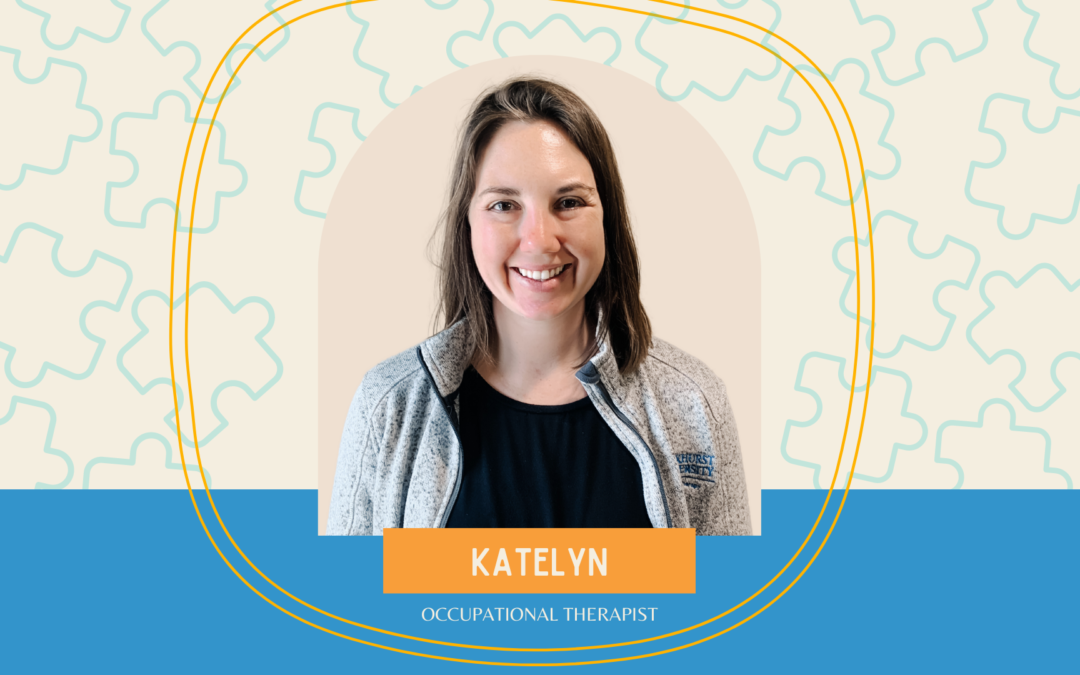Hello! My name is Katelyn Sherpe and I am an occupational therapist (OT) at Partners In Excellence. I have been practicing as an occupational therapist since November 2020 and treat clients at Winona.
One of the many reasons that I love Partners is that I am able to make connections with kiddos and see them progress with skills over time.
Today I will be discussing proprioception.
What is that?
Proprioception is defined as “the perception or awareness of the position and movement of the body”. It is the body’s ability to sense its location, movements, and actions. Proprioceptive input is received from sensory receptors located in the skin, muscles and joints. Basically, it is knowing where your body is in the space around you. This allows you to participate in activities like walking without looking at your feet and touching your nose with your eyes closed.
Why does this matter?
Children who have difficulties with proprioception and body awareness may struggle to safely navigate their environments and participate in gross motor activities.
Signs your child may have difficulties with proprioception can include:
- Using too much or too little force on objects
- Bumping into things without seeming to notice
- Frequently falling/tripping
How does occupational therapy help?
Occupational therapy assists in promoting children’s proprioception and body awareness through the use of proprioceptive activities. Proprioception activities can either be heavy muscle work activities or activities that apply deep pressure to the muscle and joints. These activities can provide children with a strategy to be calm, focused and ready to participate.
Occupational therapists and certified occupational therapy assistants often work with ABA staff to create and implement sensory programs to incorporate “heavy work” activities throughout the day.
What “heavy work” activities can I do with my kids at home?
- Animal walks (bear, crab, frog jump, wheelbarrow, snake crawl)
- Pushing/carrying heavy objects that are around the house
- Housework/chores: sweeping, vacuuming
- Jumping into a “crash pad” of pillows, bean bags, soft items
- Yoga poses (downward-facing dog, cobra, crab)
- Bouncing on a therapy ball/trampoline
- Hugs
- Any activities that require jumping, running, stomping, climbing and kicking

Please contact your child’s occupational therapy team with any questions or concerns regarding proprioception.
Our occupational therapy team is excited to continue to contribute to our Partners’ blog this year to offer insight into our field. Be on the lookout for more posts from our occupational therapists and certified occupational therapy assistants!
Resources
Heavy Work for Kids. Neurot Multispecialty Rehabilitation and Healthcare Centre. Retrieved 8/10/21 from https://neurotcentre.wordpress.com/2021/03/14/heavy-work-for-kids/.
What is Proprioception and Why Is It Important? Occupational Therapy Helping Children. Retrieved 8/9/21 from https://occupationaltherapy.com.au/proprioception/.
What is Proprioception, and Why Is It so Important? Healthline. Retrieved 8/9/21 from


Recent Comments